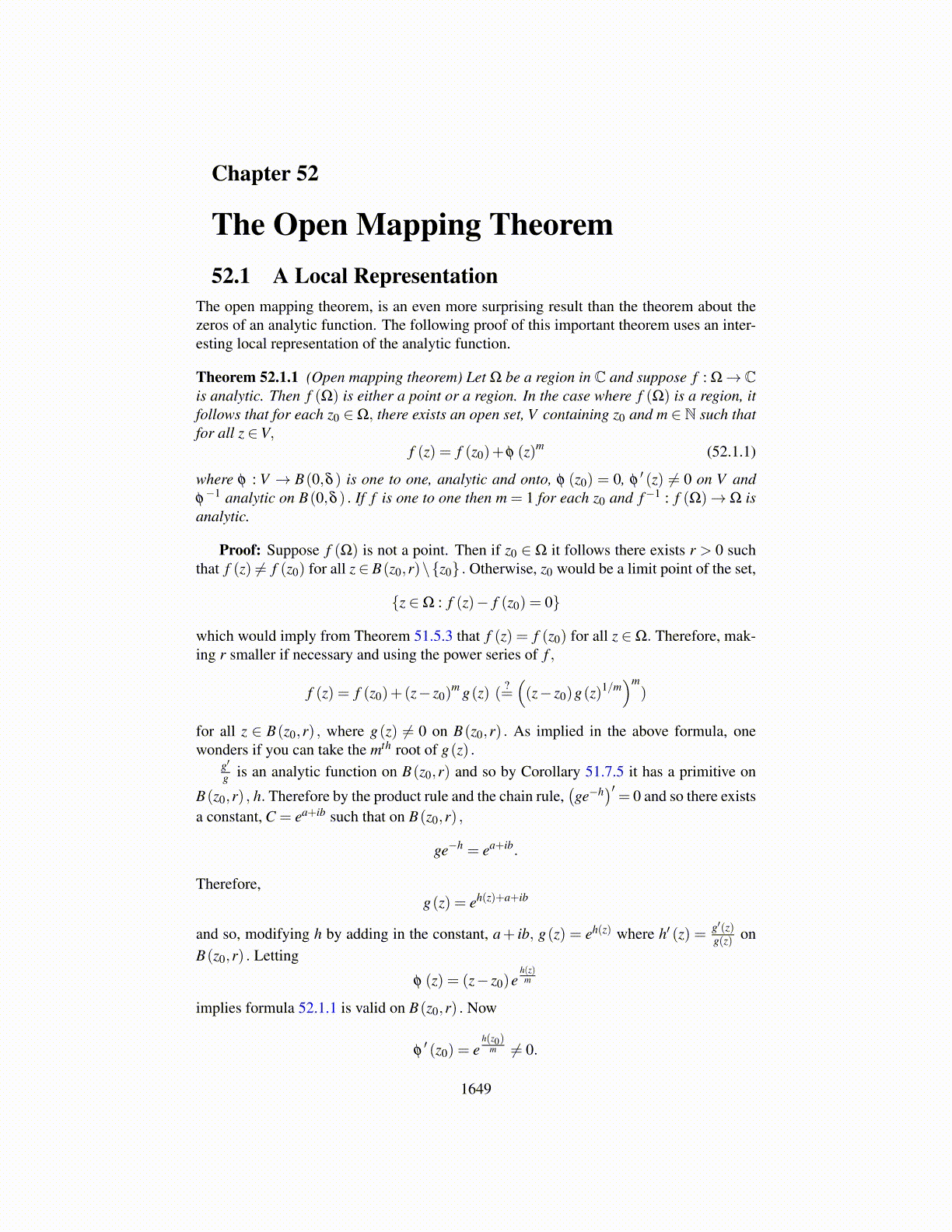
51.8. EXERCISES 1649
51.8 Exercises1. If U is simply connected, f is analytic on U and f has no zeros in U, show there
exists an analytic function, F, defined on U such that eF = f .
2. Let f be defined and analytic near the point a ∈ C. Show that then
f (z) =∞
∑k=0
bk (z−a)k
whenever |z−a|< R where R is the distance between a and the nearest point wheref fails to have a derivative. The number R, is called the radius of convergence andthe power series is said to be expanded about a.
3. Find the radius of convergence of the function 11+z2 expanded about a = 2. Note
there is nothing wrong with the function, 11+x2 when considered as a function of a
real variable, x for any value of x. However, if you insist on using power series, youfind there is a limitation on the values of x for which the power series converges dueto the presence in the complex plane of a point, i, where the function fails to have aderivative.
4. Suppose f is analytic on all of C and satisfies | f (z)| < A+B |z|1/2 . Show f is con-stant.
5. What if you defined an open set, U to be simply connected if C \U is connected.Would it amount to the same thing? Hint: Consider the outside of B(0,1) .
6. Let γ (t) = eit : t ∈ [0,2π] . Find∫
γ1zn dz for n = 1,2, · · · .
7. Show i∫ 2π
0 (2cosθ)2n dθ =∫
γ
(z+ 1
z
)2n ( 1z
)dz where γ (t) = eit : t ∈ [0,2π] . Then
evaluate this integral using the binomial theorem and the previous problem.
8. Suppose that for some constants a,b ̸= 0, a,b∈R, f (z+ ib) = f (z) for all z∈C andf (z+a) = f (z) for all z∈C. If f is analytic, show that f must be constant. Can yougeneralize this? Hint: This uses Liouville’s theorem.
9. Suppose f (z) = u(x,y) + iv(x,y) is analytic for z ∈ U, an open set. Let g(z) =u∗ (x,y)+ iv∗ (x,y) where (
u∗
v∗
)= Q
(uv
)where Q is a unitary matrix. That is QQ∗ = Q∗Q = I. When will g be analytic?
10. Suppose f is analytic on an open set, U, except for γ∗ ⊂U where γ is a one to onecontinuous function having bounded variation, but it is known that f is continuous onγ∗. Show that in fact f is analytic on γ∗ also. Hint: Pick a point on γ∗, say γ (t0) andsuppose for now that t0 ∈ (a,b) . Pick r > 0 such that B=B(γ (t0) ,r)⊆U. Then showthere exists t1 < t0 and t2 > t0 such that γ ([t1, t2])⊆ B and γ (ti) /∈ B. Thus γ ([t1, t2]) isa path across B going through the center of B which divides B into two open sets, B1,